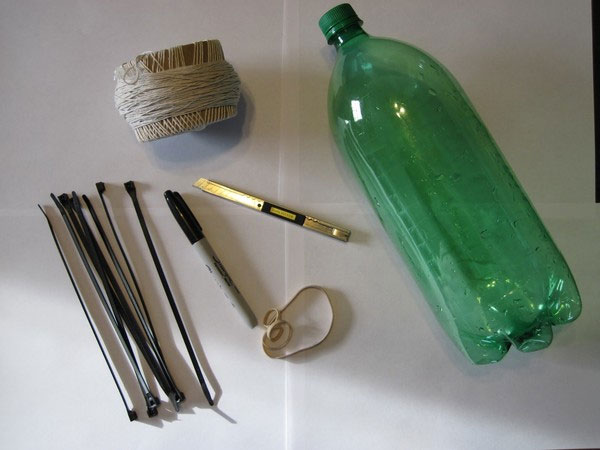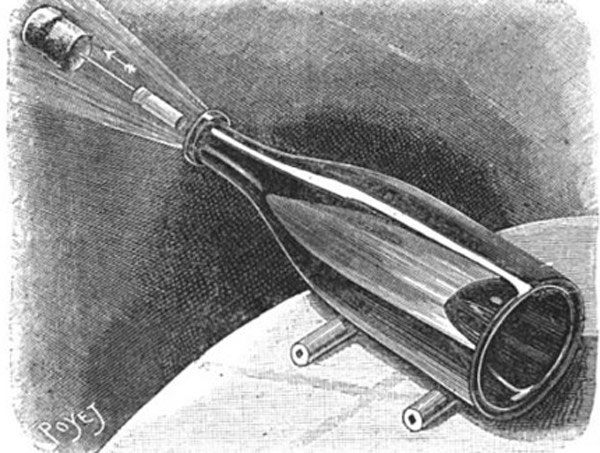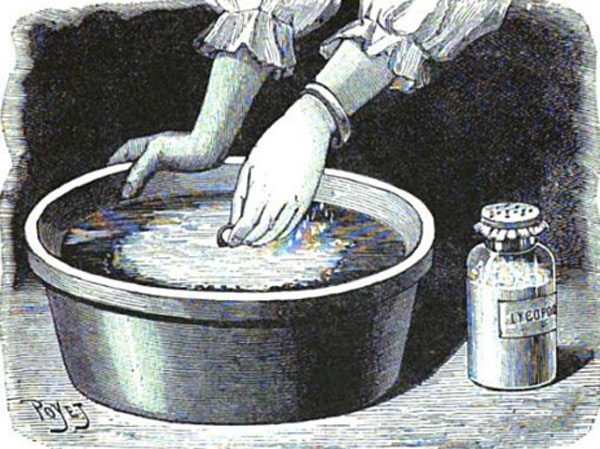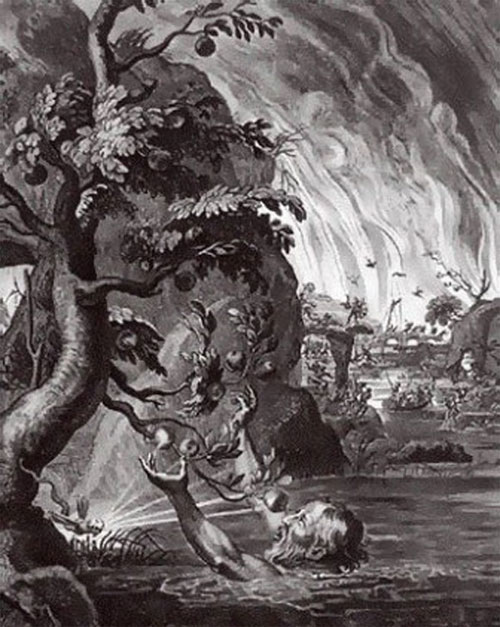See ancient science experiments like
In 1892, researcher Tom Tit published a book entitled "Magic Experiments" . In the book, the author mentioned many experiments playing with science with "magic tricks".
>>> Ways of "relieving" the dangers of young people in the 19th century
Get lost in the magical magic world and refer to a few scientific experiments that have been done hundreds of years ago.
1. Champaign explodes like a cannon
Surely many of us who once wanted to replicate a cannon on the table with thunderous explosions could scare any coward and even observed the recoil of the cannon.

Illustration
Preparation equipment needs a champaign (champagne) bottle or empty wine bottle with a bottle cap, Nabica (baking soda - baking salt), tartaric acid, a tubular scroll note paper, thread roll, wrapping paper, 2 pencils and paper clips.
First, pour water into one third of the bottle and dissolve a moderate amount of baking soda powder. The more soda, the bigger the explosion, so it's best to use only a moderate amount.

Add a small amount of tartaric acid to rolled paper and pack it inside the paper. Use only to tighten the paper roll, then insert the paper pin into the underside of the bottle cap and close the cover.
Be careful to avoid exposing the paper roll to the liquid in the bottle before you place the bottle on the rack, which is 2 pencils. Next, when the paper starts to melt, tartaric acid will encounter baking soda and "boom". The 'cannon' will fire the 'bullet bullet' and jerk backwards on the rack, just like the real cannon.
Scientific explanation:
Baking soda is trigonometric (NaHCO 3 ) and tartaric acid, of course, is acidic. When two reactants produce very fast carbon dioxide (CO 2 ). This gas takes up more volume than the original baking soda powder and consequently the bottle cap bursts out.
2. Wet coin, hands still dry
This experiment will confuse viewers when it is clear that you picked up the coin in the basin of water but the hand is still dry.
The device to be prepared is a basin or bucket of water, lycopodium powder, a heavy object like a coin, a ring.

First, you must place all flammable items away from the 5m radius. To start, you drop the test object, like a coin or ring, into the basin and let it sink.
Next, spread your 'magic powder - lycopodium' evenly onto the water. Finally, you put your hand in the basin and pick up the coin (or ring).
When you remove your hand, the coin will get wet but your hands are completely dry even if you let the audience see you soak your hands in the water.
Scientific explanation:
Of course the key factor of this experiment is the 'magic powder' class - a type of fat that is taken from the limestone . The reason we call it fat is that spores from this plant when dried will contain extremely high levels of fat.
This powder often burns very fast, because it is often used as an explosive powder by magicians. And most importantly, hydrophobic fat.
When you put your hand slowly through the powder, it will form a waterproof glove around your hand by repelling the water molecules. That's why keeping your hands still dry.
3. Use your mouth to collect candy
In myth, due to the error, the god Tantalus suffered the curse of endless hunger. Every time he was thirsty, Tantalus bowed his head to the river when the river turned into mud, and when he was hungry, he stretched his body to the branches of the tree, and the branches of the tree were heavy and high, beyond his reach.

To do this experiment you need to prepare a sturdy chair with the help of a strong and skillful person to play Tantalus.
In this experiment, Tantalus was only punished "only using the mouth to pick up candies" while standing on a recliner in contact with the ground with his front legs. Unless Tantalus balances, otherwise, the chair will collapse.
Scientific explanation:
For children, there is nothing more interesting than experimenting with candy and playing with furniture. In this experiment, the most important theory is about the focus of gravity.

Each object has its own focus, but when combined, you and the chair share a common focus. When you focus your focus on the candy, the focus will shift away from the center of focus with the chair and the consequences will be thrown off the seat.
However, if you try to bow low (the lower the level, the easier it is to balance) and try to shift the focus to the heavier tail of the chair, you can maintain your focus well to get the candy.
4. Take oil and vinegar separately in one bottle
This experiment stems from a joke about a picnic group. The whole group got angry when they learned that the person responsible for carrying oil and vinegar did not want to bring two separate bottles, so they mixed them together.

The problem is that not everyone likes the same ratio between oil and vinegar with salad. So everyone was surprised when this guy walked around the camp and served vinegar oil at the required rate.
Tools you need to prepare: oil, vinegar, a sealed bottle and several small salad plates.
Scientific explanation:
We know that a lot of liquid will separate after mixing with oil. This happens because fat in the oil 'dislikes' water particles at all.

Vinegar contains mainly water, so there will be a clear separation of the two liquids in the bottle. The oil is lighter so it will float to the top, just gently tilt the bottle to pour the oil out. With vinegar, turn the bottle upside down and also gently open the lid to get a satisfactory amount of vinegar.
* The article uses references from sources: Mentafloss, Science, Wikipedia .
- The most gruesome human experiments in history
- 8 simple but interesting scientific experiments you can try at home
- The most macabre experiments in the history of world science
- 100 scientific experiments can be done at home
- Video: 6 seconds of amazing scientific experiments
- Video: Make your own unique scientific experiments
- Try 'brainstorming' with interesting psychological experiments
- The experiment was extremely freaky
- The most macabre experiments
- Experiments creating
- Video: 10 funny science experiments with liquids
- 6 horror and extreme experiments that scientists have done with themselves
 'Fine laughs' - Scary and painful torture in ancient times
'Fine laughs' - Scary and painful torture in ancient times The sequence of numbers 142857 of the Egyptian pyramids is known as the strangest number in the world - Why?
The sequence of numbers 142857 of the Egyptian pyramids is known as the strangest number in the world - Why? History of the iron
History of the iron What is alum?
What is alum?